Shifting from Civic Management to Community Management: Barcelona Transfer Story
Edited on
03 June 2021Looking at the other cities of the network, Barcelona continued to work to support new forms of interaction between the public municipal institution and community citizen initiatives, based on the recognition of the right to public management and use of public resources by the people.
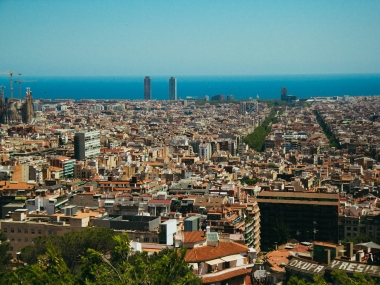
The background
Barcelona has a long history of municipal public assets being used for community purposes, including real estate, plots of land or facilities managed by non-profit organisations, and this “community-use” is administered through a variety of participatory management models.
This long-standing tradition of community-managed property and non-profit associationism is linked to the opposition against the dictatorship in Spain in the 1960s and 1970s, and the sudden growth due to the immigration experienced during the same decades: the city council did not provide the basic welfare services to the newcomers, so the neighbourhoods developed their own spaces and institutions in response. This historical background has influenced how the city is managed to this day and led to the insistence of neighbourhood services.
Barcelona’s administration has adapted to this bottom-up approach and it has consequently developed various policies which consist of the aggregation of each neighbourhood's politics. This is one of the main reason why Barcelona took part in the Civic eState project.
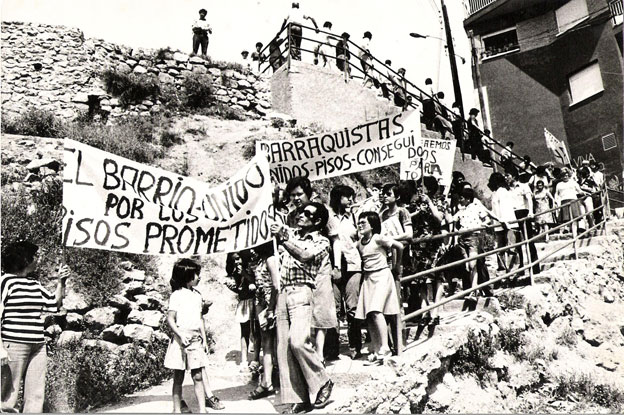
Demonstration for the right to housing, Carmel neighbourhood, 1976
A shift from Civic Management to Community Management
Barcelona City Council wants to promote new forms of interaction between the public municipal institution and community initiatives, answering the demands of the citizens to have public spaces and resources managed in a participatory manner. Barcelona is now developing further governance mechanisms to give access to and redistribution of public goods and services, by adopting and adapting regulatory frameworks developed together with other cities like Naples (e.g. the “civic use”) to enable participatory management inspired by shared criteria, values and vision and guaranteeing universality, accessibility, sustainability and transparency and secure the self-governance of the communities in the long term.
While the city has been developing multiple strategies of civic management in the past (that is a community association managing a public resource), Barcelona is hoping to turn this practice into a community management strategy. This meaning that the association managing the public resource should not only serve the purpose of the organization itself but it also should have its own mechanisms to be connected to the surrounding community interests and needs. The shift from Civic Management to Community Management implies incorporating a form of democratic and participatory governance, understanding that the entire community must be able to participate in the resource.
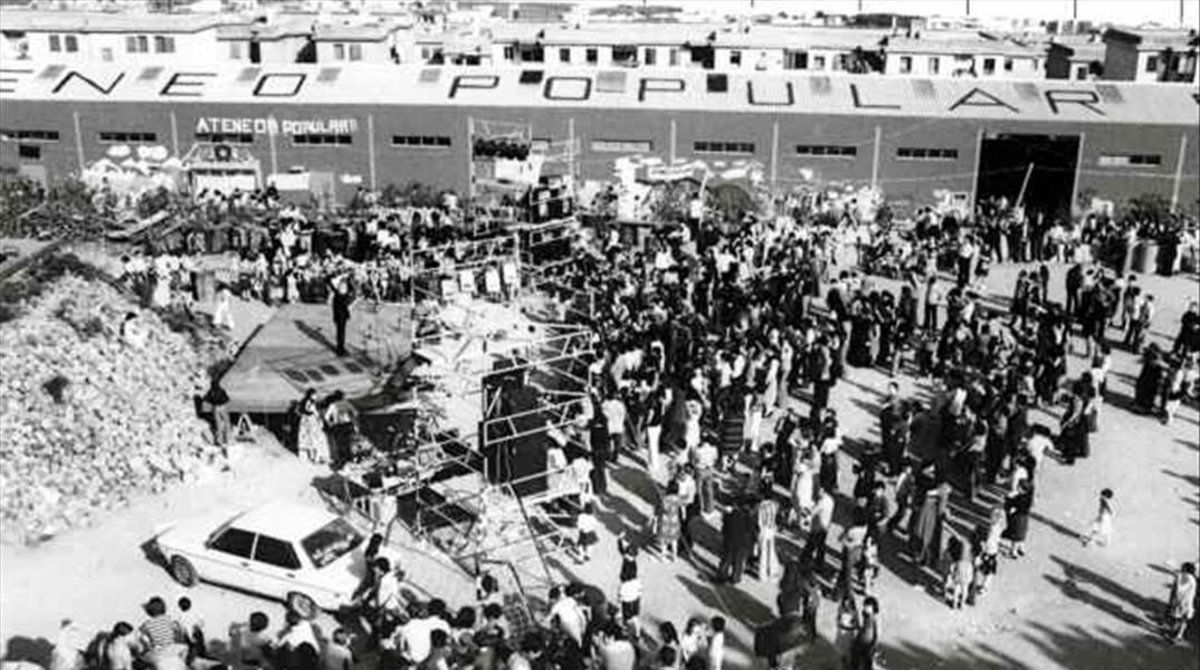
Occupation of Ateneu Nou Barris, 1977. Today, Ateneu Popular 9 is a public socio-cultural centre that adheres to a community management model. It was created as a result of a neighbourhood occupation of an asphalt plant that was built on the border between the neighbourhoods of Roquetes and Trinitat Nova.
The transfer of public assets has been a common practice, although without a clear and coordinated (at least until now) commitment between different areas and districts of the municipal administration. The City Council generated a policy program about urban commons where citizens and various stakeholders have the capacity to constantly review both the theory and practice of urban commons. The Community Balance is a community-based self-evaluation tool that ensures a democratic approach to the urban commons. At the same time, Barcelona aimed to coordinate and provide social criteria for the transfer of spaces and the management of municipal services to community projects promoted by non-profit entities in the city, and elaborated a “Citizen Assets Catalogue”, a census of buildings that can be let to the citizenry.
Barcelona's Citizen Assets Programme
As anticipated, Barcelona's citizens participated in social life through associations, community organizations and movements since the end of the XIX century. During the dictatorship (1939-1975), these organizations were spaces of freedom and mutual aid. Their importance is relevant also after the dictatorship and part of the public services and mobility achievements of the Barcelona city council have been the result of demonstrations, campaigns and other kinds of citizen pressure activities.
To strengthen, support and promote these communitarian experiences, the Barcelona City Council, with the support of different kinds of social stakeholders, developed in 2017 the Community Use and Management of Citizen Assets Programme. The programme has defined two main guidelines, the Community Balance and the Citizen Assets Catalogue.
The first defines the framework that regulates access to, and transfer of, municipal assets and creates a new self-evaluation mechanism. The Community Balance is being developed by the Solidarity Economy Network (XES) with the collaboration of the different civic neighbourhood entities.
Developing a Community Balance has been the starting tool for self-evaluations and it is vital to share it with the other European cities, as happened in the Civic eState project. It gives an idea of the values needed to monitor commons, and vice versa can reveal gaps and new solutions. Right now, its basic version is too general, too large and it lacks some elements: more pilot tests need to be done, as well as the itineraries, to finish adapting the tool to the diversity of projects. It is also necessary to generate spaces to advise and train organizations to share “common meanings”. The second guideline, the Citizen Assets Catalogue, is a census of public assets that can be left to the community.
The Local Council has created a municipal body, the Citizen Asset Office, where the most important municipal departments are related to the cession of municipal assets to non-profit organizations. Its main objective is to arrange the criteria and modalities under which collaborative agreements about the provision of services are being carried out by non-profit collectives. The Office is formed by ULG members and has started its activity at the end of 2019. One of the challenges is to let the ULG become a legally and formally working group (the Citizens Assets Participatory space) in the organizational structure of the City Council.
Challenges
After 3 years of setting up the project, Barcelona’s Local Council still faces several challenges. Apart from the ones related to the Community Balance and the Citizen Asset Board, there are other challenges as:
- Need to respond to a growing demand regarding the community management of public facilities and services.
- Formalize and regularize the Citizens Assets Participatory space in the organizational structure of the City Council.
- It is necessary to provide common criteria that can guide the decisions to allocate resources to community management.
- The procedures for small entities are complicated, they should be simplified and digitized.
Moreover, there is a need to coordinate the relations between the local entities and the City council. Each of the 10 districts has its own responsibilities and has its own relationship with the city council. Districts and areas have different criteria, procedures and modalities.
Plans for the future
In conclusion, Barcelona needs to define a common framework that includes the different municipal policies and community practices under which participative management of resources, spaces and public services are developed, generating shared values and vision that guarantee mechanisms of universality, accessibility, sustainability and transparency.
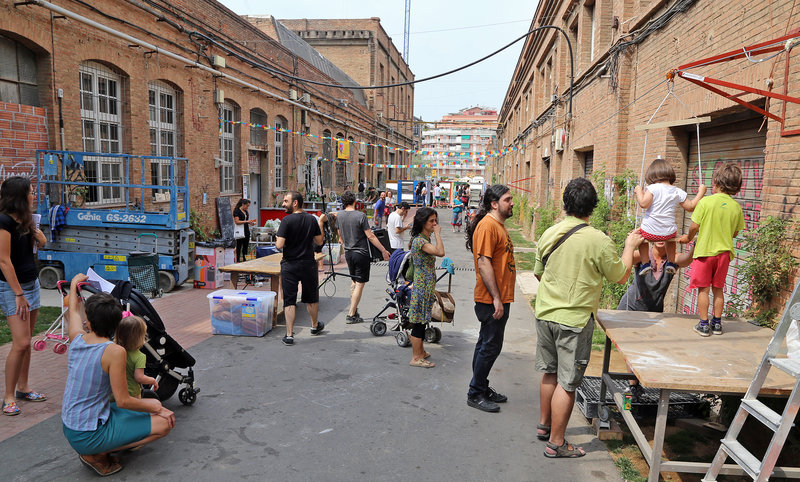
Can Batlló, a former 19th century textile mill, is an example of neighbourhood organisation and the reuse of urban spaces. Reclaimed in 2011, it has become the focus of social and cultural activity, including an urban vegetable plot, workshop, library, cultural centre, cinema and print shop. An entire microcosm within the city to which each resident contributes.
Beyond the political will, the proliferation of experiences and the diversity of cases makes it essential to arrange the criteria under which collaborative agreements about the provision of services are being carried out by non-profit collectives. Far from willing to homogenize (the experiences are indeed very diverse), it is necessary to provide common procedures that can guide the decisions to allocate resources to community management, based on indicators and objective data, which allow assessing the social impact and return of the entity to the territory, as well as the community dimension of the proposals to be developed by the communities in these municipal resources. This new framework, which includes the Citizens Assets Programme as well as a renewed proposal for Community Management of Facilities and Services, constitutes the future of the Barcelona City Council Commons Programme.
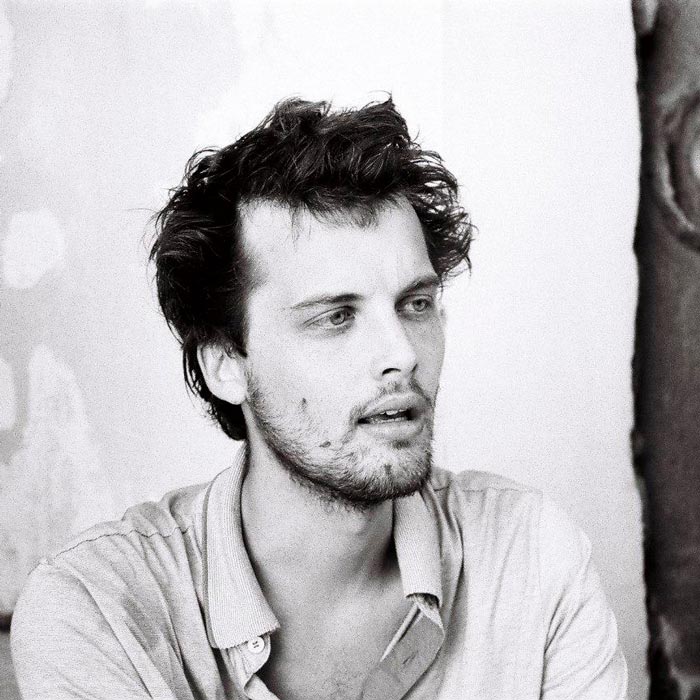 Submitted by Gregorio Turolla on
Submitted by Gregorio Turolla on
